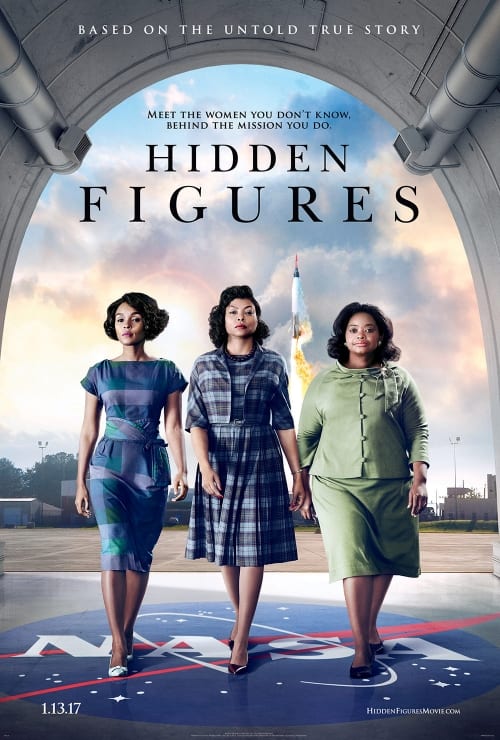By Rhonda Vonshay Sharpe
As a researcher with interest in how women and girls find space in STEM environments, I have been thinking about how “Hidden Figures” and many daily and educational experiences might affect girls who are not math confident. Many parents — black parents in particular — will bring their daughters to the movies to inspire them about what is possible in STEM – Science, Technology, Engineering, and Math. However, there can be a disconnect between what parents and daughters take away from the movie.
Spoiler alert for those who haven’t seen the movie yet: imagine taking your daughter and her friend to see “Hidden Figures” and you swell with so much pride that tears form in your eyes the first time Katherine climbs the ladder to write out equations on the chalkboard. After the movie, they talk about their favorite scenes: When Glenn refuses to go into orbit until Katherine checked the numbers. When Katherine schooled her future husband about the female roles at NASA. They commented on the costumes too.
But when they’re asked about the characters’ jobs as high level mathematicians, they say: “I could never do that.” A response you are not expecting. Why? Because you saw “Black Girl Magic” — black women “doing their thing” using computer science, engineering and math. But your daughter and her friend saw a black woman doing math (Katherine), teaching herself code (Dorothy), and studying engineering in a room full of white men (Mary), but were not inspired to be human computers.
This is what happened with a mother I know who excitedly took her daughter to see “Hidden Figures.” Her pre-teen struggles with math and spends hours after school getting assistance from her teacher. The mother also pays for expensive private tutoring. But for all the support she gets, math continues to be a struggle. The daughter reads voraciously, makes lovely bracelets and crafts, loves to cook, and enjoys creating scents using chemistry. Math is just not her thing. And that’s okay.
Math has become the metric for being “gifted.” As if the ability to string words together to articulate your thoughts and awaken the reader’s imagination is not a sign of “genius.” It is the brilliant prose of Margot Lee Shetterly that brought the stories of Katherine, Dorothy, and Mary to the public’s attention. It is the lyrical creativity of Lin Manuel Miranda that brought Revolutionary War history to life in the multi-Toni award winning play “Hamilton.” MacArthur Fellowships—so-called “genius grants” — are given to wiriters, composers, artists, playwrights, linguists, lawyers, and historians, as well as to scientists and mathematicians.
This past summer, I had the pleasure of attending the “Math Wiz Games,” created by seventh grader Amina Anekwe and sponsored by the GrassRoots Community Foundation. Amina created the event to help girls become more confident in math. She was inspired when an educational experience challenged her math confidence. The “Math Wiz Games” were amazing!
But in talking to the girls (and their parents), I could see that each girl experiences math differently.
I was tickled when Mikaela, a fourth grader, described herself as math confident, while her mother sat behind her mouthing “NO!” Mikaela said word problems were the hardest. When I asked how she used math every day, she said I count my steps. Niki, another mother at the games, said her daughter doesn’t like math sentences: There are ten trees. Two are pear trees; four are apple trees, …
Vern, one of the few fathers at the games, described his family as math confident. His daughter, Jewel, said she prefers adding and multiplication to division and subtraction. “Numbers getting smaller in my head feels weird,” she said. Alexis, another participant, like Jewel, prefers adding to subtraction and says she’s a “little bit” math confident. Her mother just completed a degree in applied science and technology. But even she doesn’t feel confident with all math. “I can work with the numbers,” she said, “but cos(ine) and tan(gent)?” As a mathematician who also prefers numbers, applied math, over the more abstract concepts of mathematics, I could empathize with this mom.
The winner of the “Math Wiz Games” was Nina–a first grader who likes math “but not when it is 102+102.” She likes math problems “like 10+5 then you take away something.“ When I asked how she felt about winning, she said “I feel really proud of myself.” Her mother said Nina has always been about order and has expressed an interest in being an engineer, like Mary Jackson, the character played by Janelle Monae in the movie.
My conversations with the girls and parents reminded me that math ability is not a “good/not good” binary, but rather a scale with basic arithmetic and fractions at one end and abstract algebra and real analysis at the other. Different people will find their math confidence at different places on the scale. If a girl loves baking, using weights and measurements will build her math confidence.
Math, computer science, and engineering were the paths by which Katherine, Dorothy, and Mary became competent, capable, and confident. But girls should feel competent, capable, and confident in whatever arena they choose.
So as you take your daughters to see “Hidden Figures,” I hope you will use the experience to inspire your daughter to find her own path to becoming competent, capable, and confident in whatever it is that she loves. Math isn’t the only path.


